Published Mar 8, 2023
10 Women in Command Who Paved the Way for Kathryn Janeway
Women lead the way in Star Trek long before Janeway took the captain's chair.
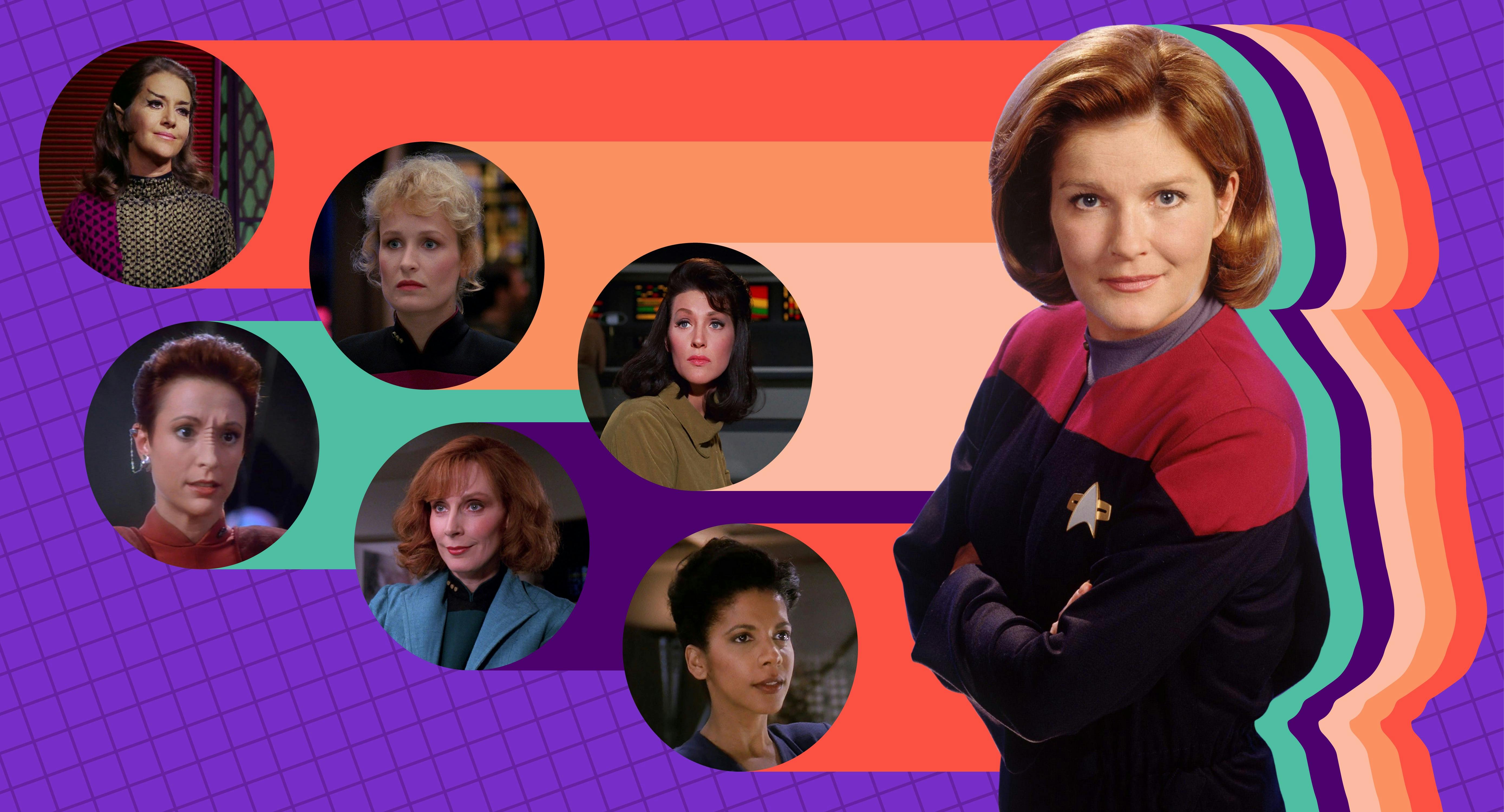
StarTrek.com
Star Trek has long been thought of forward-thinking when it comes to representations of women in positions of power and authority — even before the addition of the trailblazer Captain Kathryn Janeway.
Let’s explore ten representations of women leadership over the first 30 years of the franchise’s history that, for good and ill, paved the way for the 1995 debut of Kate Mulgrew’s intrepid captain.
10 Women in Command Who Paved the Way for Kathryn Janeway
Number One
(Majel Barrett, 1964)
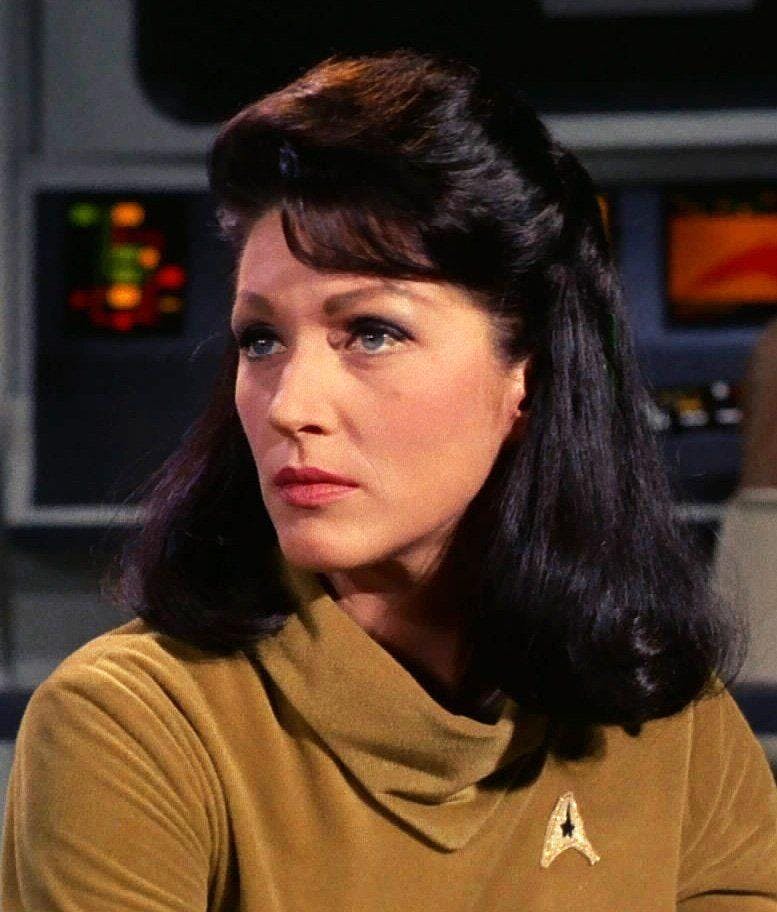
StarTrek.com
When Star Trek’s pilot, “The Cage,” was first pitched to television executives, Captain Christopher Pike had a woman first officer, known only as “Number One.” Execs loved the concept of Star Trek, but found the woman first officer not believable. The series was retooled around the Kirk-Spock-McCoy triumvirate and “The Cage” was not shared with the public until the late eighties.
Number One spoke without a whispery, ultra-feminine voice like those adopted by other women characters. Pike granted her “honorary man” status when he said he doesn’t like women on the Bridge, “except for you, Number One.” She was left in charge of the Enterprise while Pike beamed down to Talos IV because “the most experienced officer” was needed on the Bridge. Perhaps, most notably, when Pike was taken captive by the Talosians, we saw all the men in the briefing room look to Number One for a decision about how to approach the situation.
The Romulan Commander
(Joanne Linville, 1968)
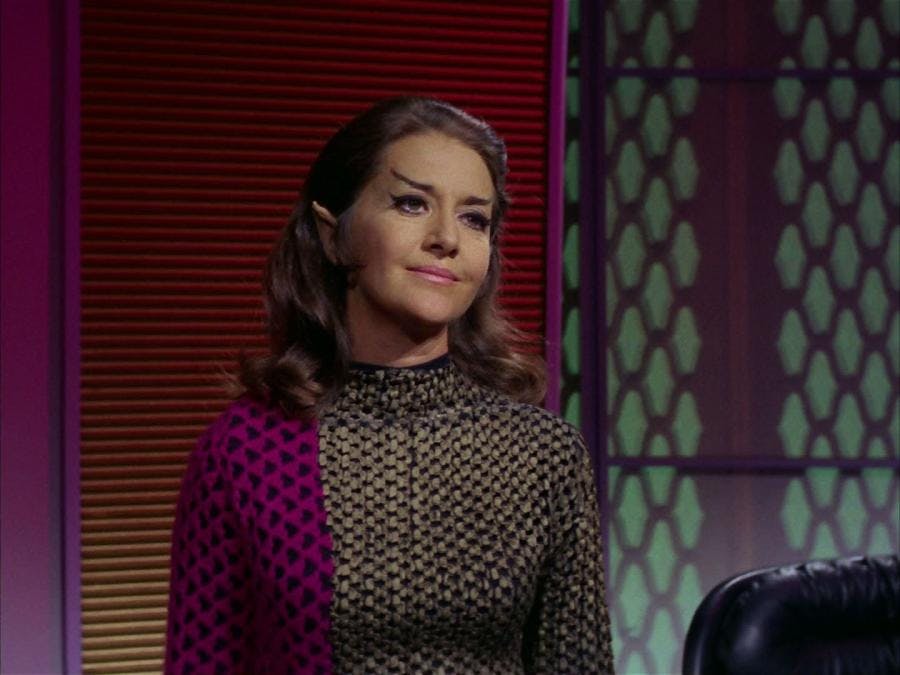
StarTrek.com
When a seemingly-unstable Captain Kirk takes the Enterprise into the Neutral Zone (“The Enterprise Incident,” Star Trek: The Original Series), he and Spock are taken prisoner by a Romulan woman Commander. When we first meet her, she’s fully clothed and visibly older (Linville was 30 at the time) than Kirk’s standard alien babes. Her primary goal seems to be the career win of delivering the Enterprise into Romulan hands, and she initially works to build solidarity with Spock to that end on the basis of shared identity rather than seduction.
Unfortunately, the possibility of getting through an entire episode without turning a woman into a romantic conquest for one of the male leads eluded TOS writers, which is why we ended up with the camera soft-focusing on her face as “the soldier transforms herself into a woman” and whispers her true name into Spock’s ear. When we last see her, she is dressed to the nines and professionally humiliated on the Bridge of the Enterprise. Nevertheless, she made this list as the high water mark in terms of women leadership on The Original Series as it originally aired.
Commander Beverly Crusher, Medical Doctor
(Gates McFadden, 1987)
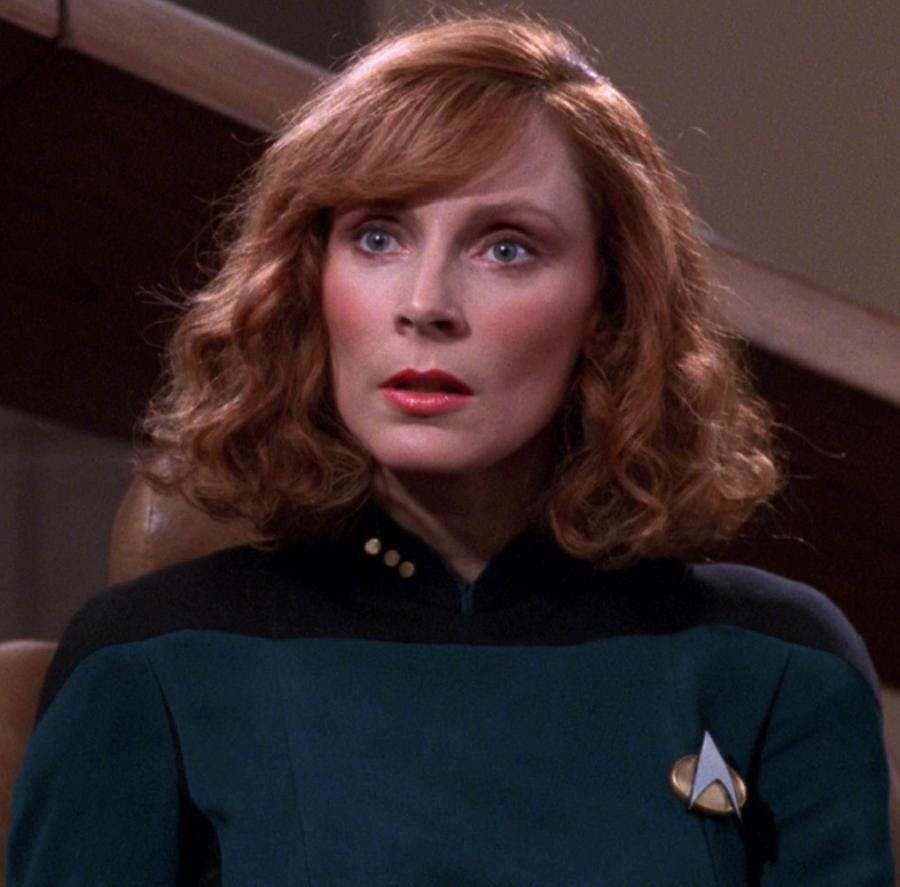
StarTrek.com
On The Next Generation, the original intention was to have a woman in charge of security, but after Denise Crosby left the show prematurely and her character, Tasha Yar, was killed off, we were left with the two remaining women in positions of caregiving and nurturance.
In later seasons, writers solved this by actually addressing the fact that Dr. Crusher carried the same rank as William Riker and gave her more to do. Crusher brought pluck, initiative, and grace under pressure to every stint she pulled on the Bridge, whether she was stretching herself with the occasional night shift (“Thine Own Self”), running the Enterprise solo when an anomaly swallowed her whole (“Remember Me”), or fighting off the Borg (“Descent”). Which is why it makes total sense that Captain Beverly Picard (she kept the name) of the Federation medical ship Pasteur would call her ex-husband Jean-Luc out after he questioned her orders on the Bridge of her ship (“All Good Things”).
Commander Deanna Troi, Mental Health Counselor
(Marina Sirtis, 1987)
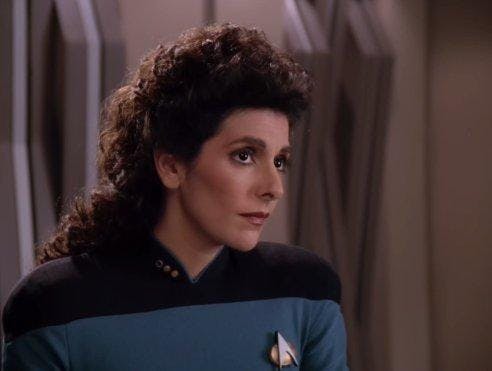
StarTrek.com
The first time we saw Troi in command on The Next Generation, it’s because she happened to be the most senior officer left alive on the Bridge after the Enterprise hit a quantum filament (“Disaster”) and every ship’s system was severely damaged. Overwhelmed and unprepared at first, she found her footing and realized that she likes being in charge.
After returning from a class reunion, Troi caught Crusher finishing up a night shift on the Bridge and they talked about Crusher’s affinity for command. This combination of experiences catalyzed her own desire to take the Bridge Officer’s exam (“Thine Own Self"). She ran into some trouble with the Engineering qualification, which she originally believed to be about schematics and technical knowledge, but eventually realized that command is about being able to put the ship ahead of personal feelings. She earned her commander’s pips by ordering a hologram of her friend, Chief Engineer Geordi LaForge, to his death to save the ship.
Captain Rachel Garrett
(Tricia O'Neil, 1990)
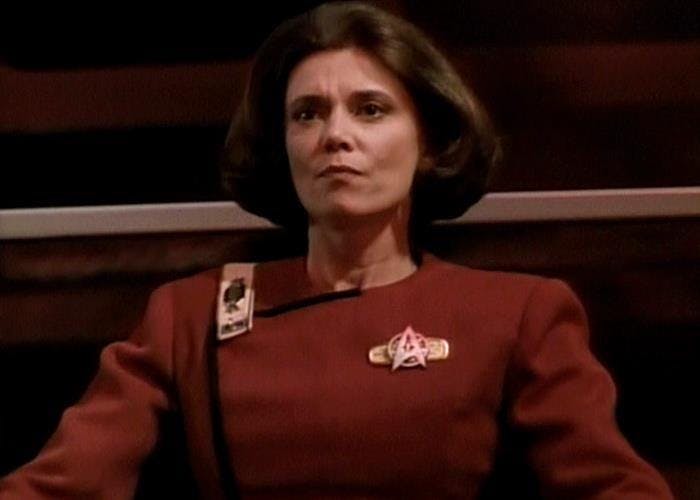
StarTrek.com
We met Garrett when her ship, the Enterprise-C, came through a rift in the space-time continuum in the middle of a battle with the Romulans and changed The Next Generation timeline (“Yesterday’s Enterprise”). Even badly injured, Garrett refused to leave the Bridge of her ship before getting answers about the well-being of her crew and the state of the battle.
Garrett wasn’t very fleshed out as a character. Nevertheless, her determination, self-sacrifice, and dedication to her ship earned her a pointed moment of respect from Captain Picard; a symbolic acknowledgement of character traits that would later be present in abundance when producers finally pulled out the big chair for Janeway.
Commander Elizabeth Shelby
(Elizabeth Dennehy, 1991)
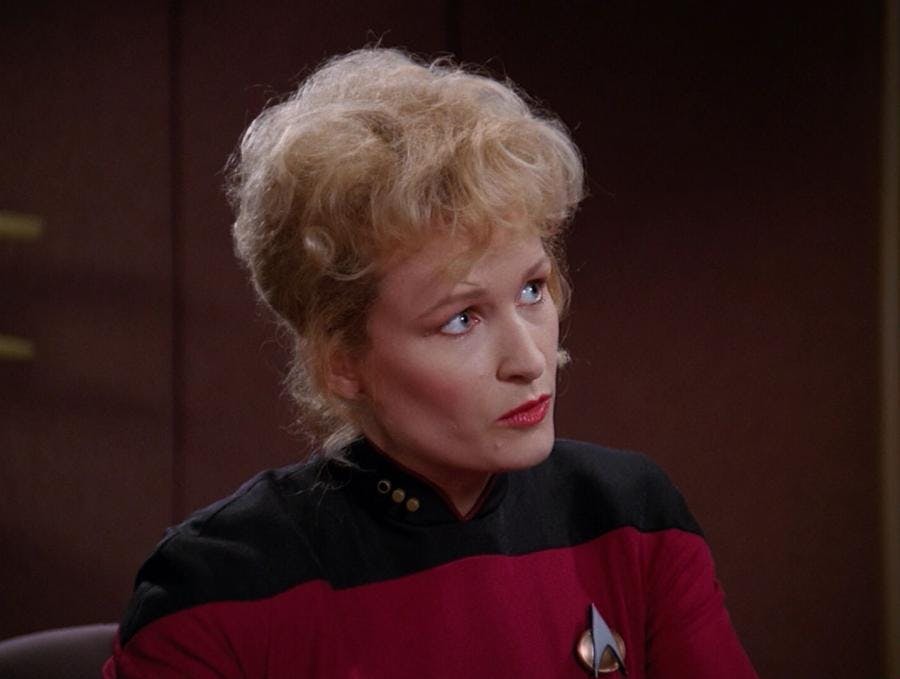
StarTrek.com
“Damn, you’re ambitious, Shelby.” Acting-Captain Riker’s words to the hotshot young commander were emblematic of her core character trait (“The Best of Both Worlds”). Shelby knew she deserved to be in charge thanks to her extraordinary competence, knowledge of the Borg, and grace under pressure. Her mentor, Admiral Hanson, admired her for her skill and energy, but also admitted to Picard that she featured in a gross “old man’s fantasies.”
This latter statement exemplified a thread that ran through the presentation of multiple women in positions of command, including Janeway herself — the writers had to find a way to remind the viewer that the character was still a woman, no matter how many pips were on her collar. In this case, they did it by making Shelby the object of her mentor’s lust.
Admiral Alynna Nechayev
(Natalia Nogulich, 1992)
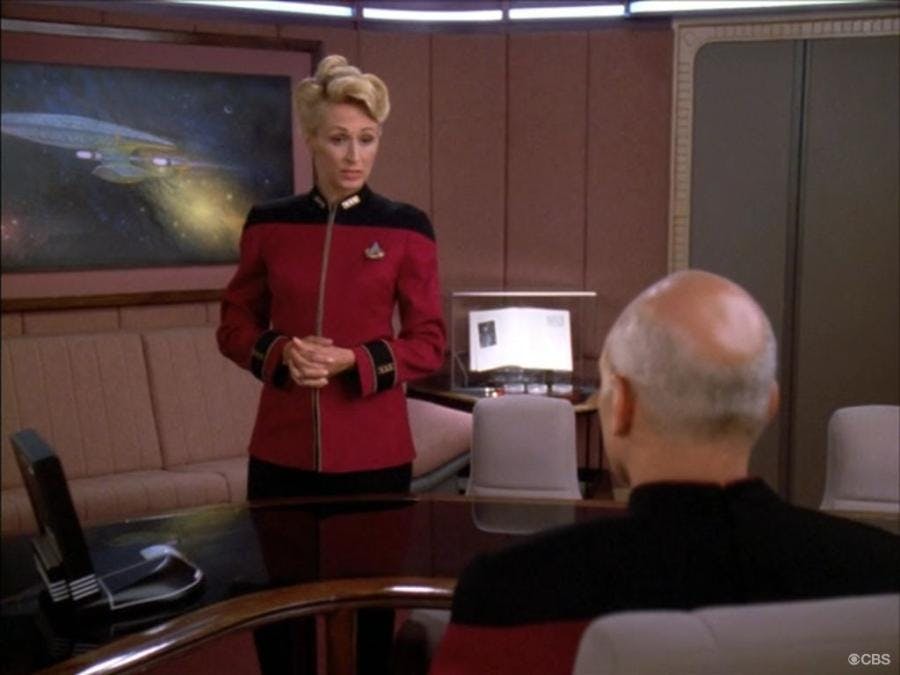
StarTrek.com
The counterpoint to Satie in every way, Nechayev is all steady, flinty competence. She was originally written to be “dark skinned,” which would have been terrific, but then ultra-blonde Nogulich was offered the part and the rest is history. We first met Nechayev when she came aboard the Enterprise in The Next Generation to take Picard’s command away from him (“Chain of Command”). Her lack of concern with being liked continued when she dressed Picard down for not committing genocide against the Borg (“Descent”). The writers eventually softened her relationship with Picard (as always, reminding us that she’s a woman after all) when he replicated her favorite canapés and she admitted that they’re “extremely fattening” (“Journey’s End,” “Preemptive Strike”).
Nevertheless, she continued to nettle the men under her command. Her relationship with Captain Sisko on Deep Space Nine was famously testy because, in his mind, her perspective was too Federation-centric, which made her ignorant of the realities faced by those living on the edges of Cardassian space (“The Maquis”).
Colonel Kira Nerys
(Nana Visitor, 1993)
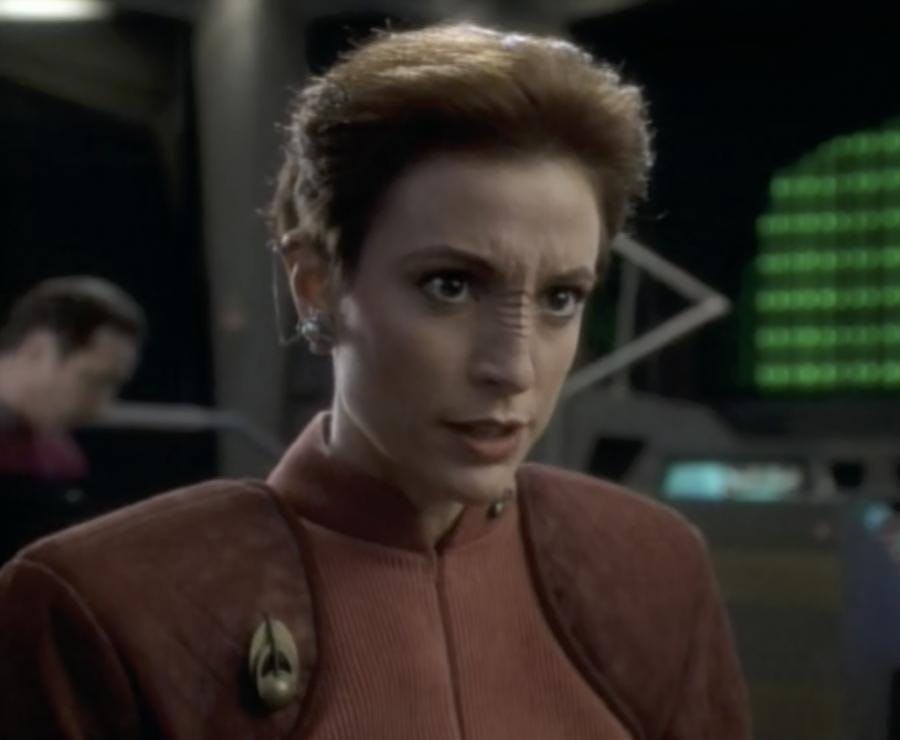
StarTrek.com
It takes a special kind of person to pivot from guerilla resistance fighter to able politician, but Kira Nerys proved up to the challenge. At first unsure of herself in her new post-Cardassian occupation role on Deep Space 9 (“Emissary,” “Past Prologue"), Kira matures into an able stateswoman (“The Homecoming,” “The Circle,” “The Siege”).
Another notable feature of Kira’s character is that we see her in multiple romantic relationships throughout the course of the series, but she is never defined or subsumed by these partnerships (“Life Support,” “Shakaar,” “His Way”).
Her passion and sometimes single-minded commitment to Bajoran independence and Cardassian accountability for the occupation lead her down dangerous paths on more than one occasion (“Past Prologue,” “Duet,” “Second Skin”) but by the end of the series, Kira comes come full circle by aiding her Cardassian former enemies as they struggle to retake their homeworld from the Dominion (“What You Leave Behind”).
Captain Kasidy Yates
(Penny Johnson Jerald, 1995)
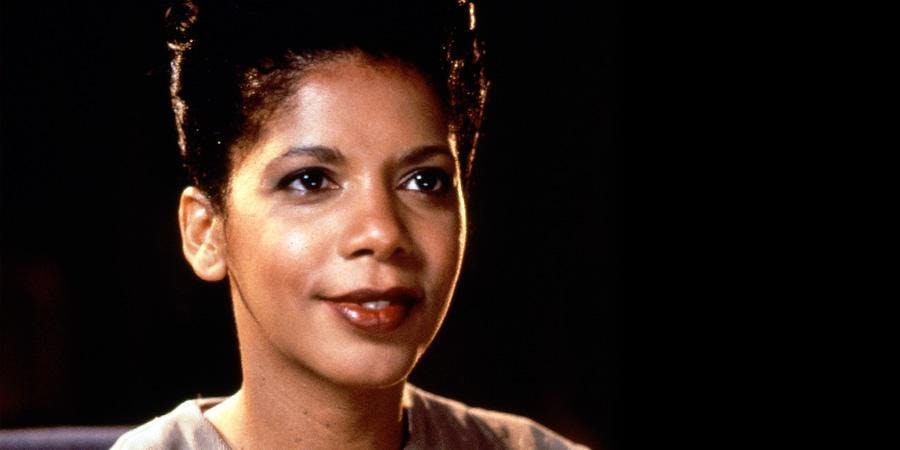
StarTrek.com
Yates was not technically introduced until a few months after Voyager premiered, but her inception paralleled Janeway’s and it was more important to have at least one Black woman on this list than to quibble over a few months’ difference in airdates.
Reserved and rigorously self-sufficient, Yates’ non-Starfleet status gave the writers an opportunity to afford her moral ambiguities they never would have given to a woman captain otherwise. She collaborated with the Maquis rebellion by using her freighter to deliver food and medical supplies to them in the Badlands and spent six months in a Federation penal colony (“For the Cause”).
Yates and Captain Sisko bonded over a shared love of baseball (“Family Business,” “Take Me Out to the Holosuite”) and, after dating for several seasons, decide to marry despite a warning from the Prophets that they would experience great sorrow if they chose to tie their lives together (“Til Death Do Us Part”).
Being the wife of the Emissary was not easy for Yates. She was livid after Sisko called in a favor from the Bajoran Freight and Shipping Authority to have her sidelined as the Dominion War escalated (“The Changing Face of Evil”). Yates set Sisko straight in a hurry and went back to work; but she was thrown by the fact that many of her Bajoran crew — people she had known for years — suddenly asked her for spiritual guidance now that she was married to the Emissary (“Strange Bedfellows”).
When last we saw Yates, she was left behind as a pregnant newlywed, comforting Jake Sisko as they both grieved Captain Sisko’s sudden departure to be with the Prophets. We never did find out whether her husband came back into her life, but we do know that she prospered as the owner-operator of Kasidy Yates Interstellar Freights (“Remembrance,” Picard).
Honorable Mentions
Kai Winn Adami
(Louise Fletcher, 1994)
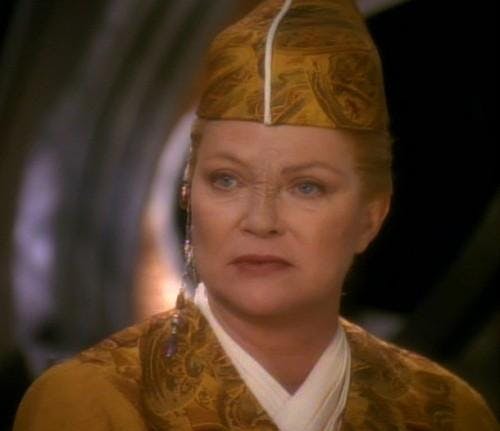
StarTrek.com
What would Deep Space Nine have been without a conniving, ambitious, hypocritical foil to the Emissary? Winn became Kai more out of political savvy than spiritual leadership (“The Collaborator”). The Prophets rejected her and she rejected them in turn (“Strange Bedfellows,” “What You Leave Behind”). She abused her power, murdered her assistant, and had sex with her mortal enemy before using him as a sacrificial lamb. Her only redeeming act was her final one, when she gave Sisko the knowledge he needed to defeat a re-animated Dukat before she was consumed by flames.
The Female Changeling
(Salome Jens, 1994)
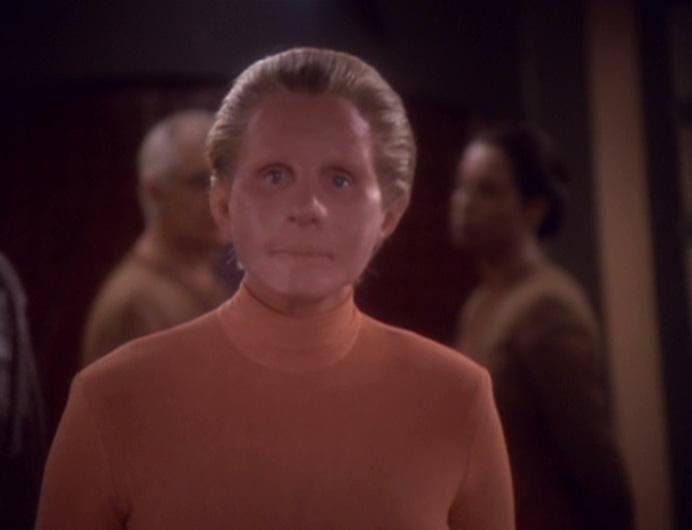
StarTrek.com
One might imagine that gender would be constructed in a non-binary fashion among a species where form is mutable; but being a creature of the nineties and having only two options, this particular Changeling chose to be a woman in her humanoid form on Deep Space Nine (“The Search"). As to her performance of gender? She was a villain and therefore producers didn’t care about making her likable. This allowed her to be vindictive, genocidal, and bent on fighting her war on the Alpha Quadrant down to the last man — that is until an Odo-ex-machina cured her of the Section 31 disease and convinced her to surrender and stand trial for her crimes in exchange for his promise to return to the Great Link (“What You Leave Behind”).
Lieutenant Natasha Yar
(Denise Crosby, 1987)
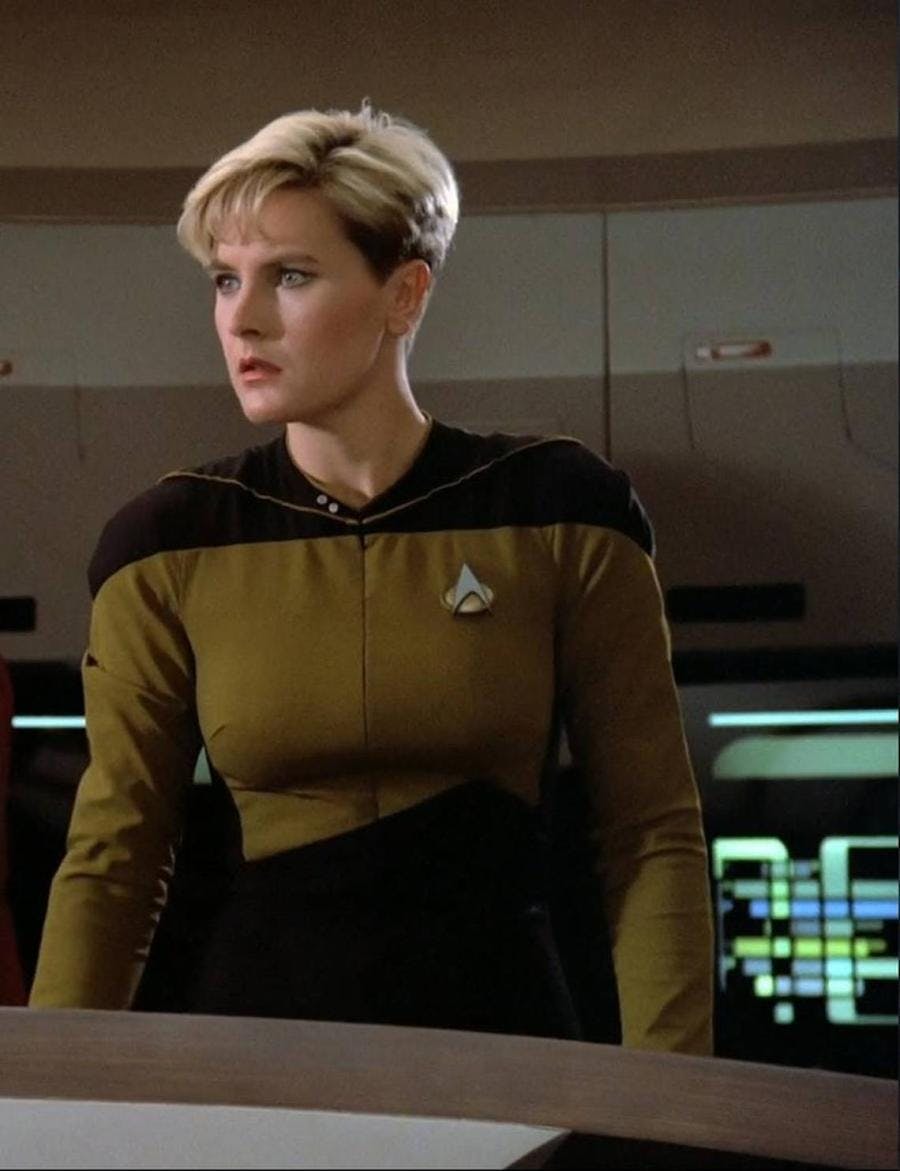
StarTrek.com
Yar was in charge of the Enterprise’s entire Security department, but since we only got her for 23 episodes, we didn’t really have a chance to see her explore her position of authority or the complications of command in the same way we did with Troi and Crusher in the later seasons of The Next Generation.
The Admirals
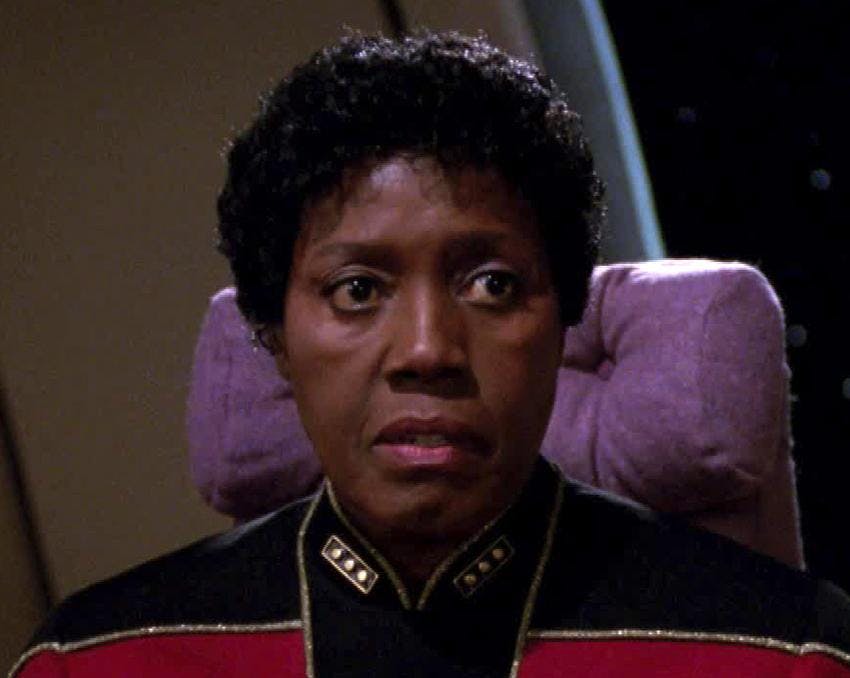
StarTrek.com
Shanthi. Hayes. Blackwell. We only saw them in passing viewscreen conversations or heard them referenced in conversation, but the implication was clear that there were women leaders all over the Federation just not in the setting we were watching.
It is interesting to note that, while we learn that Uhura was eventually promoted to the role of Admiral, we never saw her issue orders or make command decisions. It is also interesting to note that, when last we saw her, Janeway herself had become an admiral, seen briefly on Picard’s ready room viewer when she orders the Enterprise to Romulus in Star Trek: Nemesis.
This article was originally published on June 18, 2020.
Tae Phoenix (she/her) is a singer-songwriter, culture jammer, and community organizer from Seattle, WA. Her hobbies include obsessing over Star Trek and yelling at drivers to get out of the bike lane. You can find her at @taephoenix almost anywhere your personal data is being sold or at taephoenix.com.
Stay tuned to StarTrek.com for more details! And be sure to follow @StarTrek on Facebook, Twitter, and Instagram.

